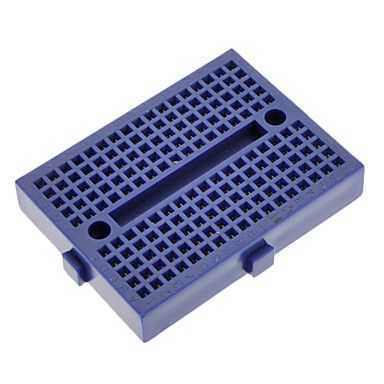A mini breadboard is a compact version of a traditional breadboard, specifically designed to work with smaller components and projects. It's a popular tool for prototyping and experimenting with Arduino, as it provides a convenient way to connect and test various electronic components without soldering.
Key Features of a Mini Breadboard:
- Smaller Size: Mini breadboards are significantly smaller than standard breadboards, making them ideal for portable projects and limited workspace.
- Grid of Holes: They have a grid of holes arranged in rows and columns, allowing you to easily insert and connect electronic components like resistors, capacitors, transistors, and integrated circuits.
- Power Bus: Most mini breadboards have power buses that run along the top and bottom rows, providing a convenient way to connect power supply to your circuit.
- Ground Bus: Similar to the power bus, there's often a ground bus that runs along the sides of the breadboard, providing a common ground reference for your circuit.
- Compatibility: Mini breadboards are fully compatible with Arduino boards and other microcontrollers, allowing you to easily connect and experiment with various components.
Applications of Mini Breadboards:
- Arduino Prototyping: They are essential for prototyping and testing Arduino projects, as they allow you to quickly connect and disconnect components without soldering.
- Small-Scale Projects: Mini breadboards are ideal for small-scale projects where space is limited, such as wearable electronics or portable devices.
- Learning and Experimentation: They are a great tool for learning electronics and experimenting with different components and circuits.
- Hobbyist Projects: Mini breadboards are popular among hobbyists and makers for creating various electronic projects.
DATA SHEET AND USECASE
Key Features:
One example is the GS-170 Series Mini Breadboard, which features:
- Tie-Points: 170
- Dimensions: Approximately 45 x 35 x 9 mm
- Material: ABS plastic body
- Features: Self-adhesive backing for easy mounting; interlocking design to connect multiple breadboards




